Windows Daily Adviser
Posted: May 2, 2012
Threat Metric
The following fields listed on the Threat Meter containing a specific value, are explained in detail below:
Threat Level: The threat level scale goes from 1 to 10 where 10 is the highest level of severity and 1 is the lowest level of severity. Each specific level is relative to the threat's consistent assessed behaviors collected from SpyHunter's risk assessment model.
Detection Count: The collective number of confirmed and suspected cases of a particular malware threat. The detection count is calculated from infected PCs retrieved from diagnostic and scan log reports generated by SpyHunter.
Volume Count: Similar to the detection count, the Volume Count is specifically based on the number of confirmed and suspected threats infecting systems on a daily basis. High volume counts usually represent a popular threat but may or may not have infected a large number of systems. High detection count threats could lay dormant and have a low volume count. Criteria for Volume Count is relative to a daily detection count.
Trend Path: The Trend Path, utilizing an up arrow, down arrow or equal symbol, represents the level of recent movement of a particular threat. Up arrows represent an increase, down arrows represent a decline and the equal symbol represent no change to a threat's recent movement.
% Impact (Last 7 Days): This demonstrates a 7-day period change in the frequency of a malware threat infecting PCs. The percentage impact correlates directly to the current Trend Path to determine a rise or decline in the percentage.
| Threat Level: | 2/10 |
|---|---|
| Infected PCs: | 26 |
| First Seen: | May 2, 2012 |
|---|---|
| OS(es) Affected: | Windows |
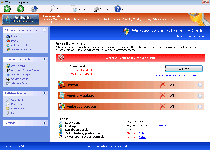 Windows Daily Adviser may be full of security warnings that are supposedly intended to help protect your PC, but the contents of Windows Daily Adviser's alerts, pop-ups and scans are always fraudulent and should never be considered legitimate PC security advice. SpywareRemove.com malware researchers have observed characteristics of Windows Daily Adviser that lead to Windows Daily Adviser naturally being a barely-tweaked descendant of other scamware products from the FakeVimes subgroup, a group of PC threats that specialize in the types of fraudulent security displays that are common to rogue anti-malware programs. Windows Daily Adviser's functions aren't limited bad pop-ups or system scans, either, since PC threats from this family have also been known to disable Windows security features and may also redirect your browser to unwanted websites. Such traits make Windows Daily Adviser a genuine threat to your computer, rather than a genuine protector, and it's always recommended for you to delete Windows Daily Adviser with a real anti-malware scanner once you have an opening for the job.
Windows Daily Adviser may be full of security warnings that are supposedly intended to help protect your PC, but the contents of Windows Daily Adviser's alerts, pop-ups and scans are always fraudulent and should never be considered legitimate PC security advice. SpywareRemove.com malware researchers have observed characteristics of Windows Daily Adviser that lead to Windows Daily Adviser naturally being a barely-tweaked descendant of other scamware products from the FakeVimes subgroup, a group of PC threats that specialize in the types of fraudulent security displays that are common to rogue anti-malware programs. Windows Daily Adviser's functions aren't limited bad pop-ups or system scans, either, since PC threats from this family have also been known to disable Windows security features and may also redirect your browser to unwanted websites. Such traits make Windows Daily Adviser a genuine threat to your computer, rather than a genuine protector, and it's always recommended for you to delete Windows Daily Adviser with a real anti-malware scanner once you have an opening for the job.
Windows Daily Adviser – a Poor Choice for a Software Sage
Windows Daily Adviser looks and, on a superficial level, even acts like an anti-virus scanner with a range of other security-related functions. However, Windows Daily Adviser's persistent inability to display inaccurate security information belies this outer appearance of security. System scans by Windows Daily Adviser will always contain lists of nonexistent PC threats, while Windows Daily Adviser's various manners of pop-ups will always include fake system alert information that should never be considered safe to act on for your computer's protection. Victims of Windows Daily Adviser attacks who are concerned about confusing Windows Daily Adviser's alerts with genuine anti-malware warnings should first try to disable Windows Daily Adviser by booting into Safe Mode or booting from a remote hard drive, which will allow you to embark on a genuine analysis of your PC's health.
Such fraudulent information, while no good to you, is helpful to Windows Daily Adviser's criminal distributors in that it's a handy excuse to cause other attacks and then imply that unrelated PC threats are at fault. This ultimately ends in Windows Daily Adviser asking for money in exchange for the capability to remove these fake infections – an unfair trade that SpywareRemove.com malware researchers always encourage you to refuse. However, the key code '0W000-000B0-00T00-E0020' can be used to fake Windows Daily Adviser's registration and minimize its attacks.
A Few Reasons Why You Shouldn't Underestimate the Power of a Fake AV Program
Windows Daily Adviser has also been noted for its capability to launch attacks against security functions and features, with an especial focus on:
- Disabling the UAC, a Windows feature that blocks unauthorized system changes.
- Disabling warning messages for invalid file signatures.
- Blocking genuine security programs that could help you detect or remove Windows Daily Adviser.
These attacks are also common to other members of Win32/FakeVimes, including Privacy Guard Pro, Extra Antivirus, Fast Antivirus 2009, Presto TuneUp, Windows Security Suite, Smart Virus Eliminator, Packed.Generic.245, Volcano Security Suite, Windows Enterprise Suite, Enterprise Suite, Additional Guard, Live PC Care, PC Live Guard, Live Enterprise Suite, Security Antivirus, My Security Wall, CleanUp Antivirus, Smart Security and PrivacyGuard Pro 2.0.



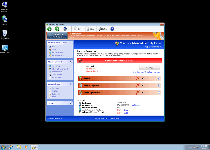

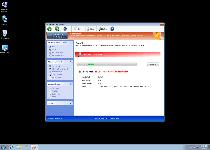


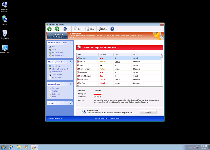

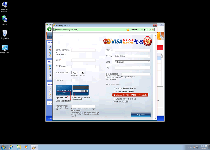

Use SpyHunter to Detect and Remove PC Threats
If you are concerned that malware or PC threats similar to Windows Daily Adviser may have infected your computer, we recommend you start an in-depth system scan with SpyHunter. SpyHunter is an advanced malware protection and remediation application that offers subscribers a comprehensive method for protecting PCs from malware, in addition to providing one-on-one technical support service.
* See Free Trial offer below. EULA and Privacy/Cookie Policy.
Why can't I open any program including SpyHunter? You may have a malware file running in memory that kills any programs that you try to launch on your PC. Tip: Download SpyHunter from a clean computer, copy it to a USB thumb drive, DVD or CD, then install it on the infected PC and run SpyHunter's malware scanner.
Technical Details
File System Modifications
Tutorials: If you wish to learn how to remove malware components manually, you can read the tutorials on how to find malware, kill unwanted processes, remove malicious DLLs and delete other harmful files. Always be sure to back up your PC before making any changes.
The following files were created in the system:%AppData%\NPSWF32.dll
File name: %AppData%\NPSWF32.dllFile type: Dynamic link library
Mime Type: unknown/dll
Group: Malware file
%AppData%\result.db
File name: %AppData%\result.dbMime Type: unknown/db
Group: Malware file
%AppData%\W34r34mt5h21ef.dat
File name: %AppData%\W34r34mt5h21ef.datFile type: Data file
Mime Type: unknown/dat
Group: Malware file
%AppData%\Protector-[random 3 characters].exe
File name: %AppData%\Protector-[random 3 characters].exeFile type: Executable File
Mime Type: unknown/exe
Group: Malware file
%AppData%\Protector-[random 4 characters].exe
File name: %AppData%\Protector-[random 4 characters].exeFile type: Executable File
Mime Type: unknown/exe
Group: Malware file
%Desktop%\Windows Daily Adviser.lnk
File name: %Desktop%\Windows Daily Adviser.lnkFile type: Shortcut
Mime Type: unknown/lnk
Group: Malware file
%CommonStartMenu%\Programs\Windows Daily Adviser.lnk
File name: %CommonStartMenu%\Programs\Windows Daily Adviser.lnkFile type: Shortcut
Mime Type: unknown/lnk
Group: Malware file
Registry Modifications
HKEY..\..\..\..{Subkeys}HKEY_CURRENT_USER\Software\Microsoft\Windows\CurrentVersion\Run\InspectorHKEY_CURRENT_USER\Software\Microsoft\Windows\CurrentVersion\Internet Settings\WarnOnHTTPSToHTTPRedirect 0HKEY_CURRENT_USER\Software\Microsoft\Windows\CurrentVersion\Settings\ID 4HKEY_CURRENT_USER\Software\Microsoft\Windows\CurrentVersion\Settings\UID [rnd]HKEY_CURRENT_USER\Software\Microsoft\Windows\CurrentVersion\Settings\net [date of installation]HKEY_LOCAL_MACHINE\SOFTWARE\Microsoft\Windows\CurrentVersion\policies\system\ConsentPromptBehaviorAdmin 0HKEY_LOCAL_MACHINE\SOFTWARE\Microsoft\Windows\CurrentVersion\policies\system\ConsentPromptBehaviorUser 0HKEY_LOCAL_MACHINE\SOFTWARE\Microsoft\Windows\CurrentVersion\policies\system\EnableLUA 0HKEY_LOCAL_MACHINE\SOFTWARE\Microsoft\Windows NT\CurrentVersion\Image File Execution Options\AAWTray.exeHKEY_LOCAL_MACHINE\SOFTWARE\Microsoft\Windows NT\CurrentVersion\Image File Execution Options\AAWTray.exe\Debugger svchost.exeHKEY_LOCAL_MACHINE\SOFTWARE\Microsoft\Windows NT\CurrentVersion\Image File Execution Options\AVCare.exeHKEY_LOCAL_MACHINE\SOFTWARE\Microsoft\Windows NT\CurrentVersion\Image File Execution Options\AVCare.exe\Debugger svchost.exeHKEY_LOCAL_MACHINE\SOFTWARE\Microsoft\Windows NT\CurrentVersion\Image File Execution Options\AVENGINE.EXEHKEY_LOCAL_MACHINE\SOFTWARE\Microsoft\Windows NT\CurrentVersion\Image File Execution Options\AVENGINE.EXE\Debugger svchost.exe
Additional Information
| # | Message |
|---|---|
| 1 | Error
Attempt to modify Registry key entries detected. Registry entry analysis recommended. |
| 2 | Warning
Firewall has blocked a program from accessing the Internet C:\program files\internet explorer\iexplore.exe is suspected to have infected your PC. This type of virus intercepts entered data and transmits them to a remote server. |
| 3 | Warning! Spambot detected!
Attention! A spambot sending viruses from your e-mail has been detected on your PC. |
Leave a Reply
Please note that we are not able to assist with billing and support issues regarding SpyHunter or other products. If you're having issues with SpyHunter, please get in touch with SpyHunter customer support through your SpyHunter . If you have SpyHunter billing questions, we recommend you check the Billing FAQ. For general suggestions or feedback, contact us.